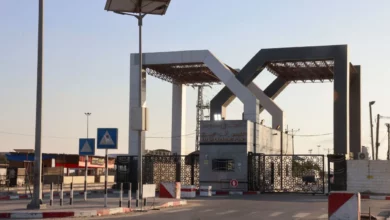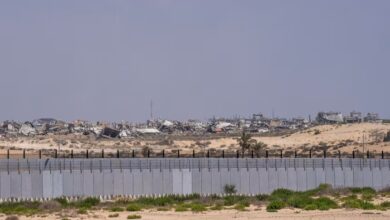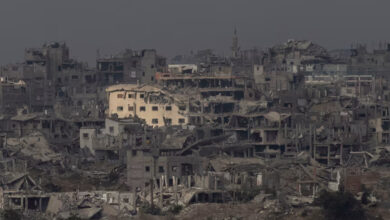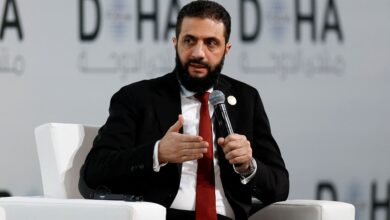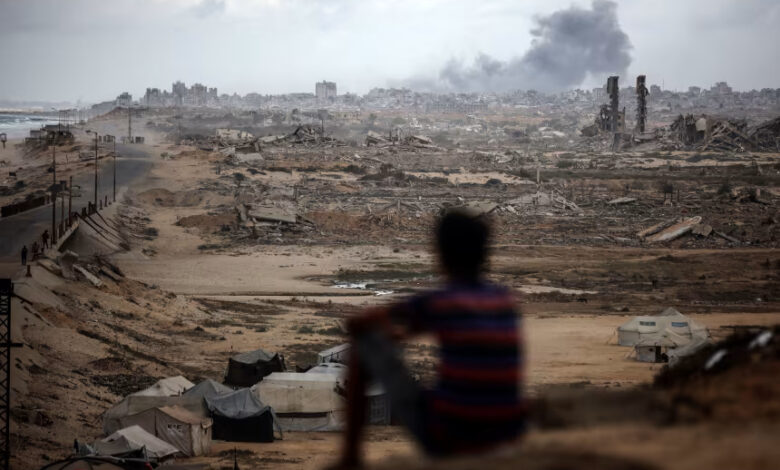
After months of delays and disappointments, a ceasefire between Israel and Hamas came into effect in Gaza on Friday.
Thousands of Palestinians have begun walking from the south of Gaza toward Gaza City in the north. The Israeli military is pulling back its forces, in accordance with the deal approved by Israel’s government overnight.
US President Donald Trump announced the agreement in a short Truth Social post on Wednesday. Although the ceasefire represents a major diplomatic breakthrough for his administration, it leaves much to be decided.
It is not clear whether Israel and Hamas will agree to other conditions proposed by Trump relating to thornier questions of what Gaza will look like after the war.
Here’s what we know about the deal so far.
What has been agreed?
The US president broke news of an agreement on his Truth Social platform on Wednesday, saying it would lead to the swift release of hostages and the withdrawal of Israeli forces to an agreed line.
After a late-night government approval, the Israeli military on Friday said that the ceasefire is in effect, and that its forces had begun to withdraw to an agreed-upon line.

Hamas’ chief negotiator, Khalil al-Hayya, said Thursday that the group has received guarantees from the US and international mediators confirming that this deal means “the war has ended permanently,” rather than representing a temporary ceasefire, as on previous occasions.
However, it is not clear if the Israeli Prime Minister’s Office has given the order to the Israel Defense Forces to cease fire.
Eyewitnesses reported Israeli airstrikes and artillery shelling in the center of Khan Younis and in Gaza City early Friday morning. Footage from a Reuters camera positioned in southern Israel also showed large plumes of smoke seen rising into the air in Gaza on Friday morning.
Israel’s partial withdrawal from Gaza is expected to take fewer than 24 hours. There will also be a 24-hour window during which petitions objecting to the deal can be submitted to the Israeli High Court. Once this objection window closes, Hamas will have 72 hours to release the hostages, two Israeli officials told CNN.
Another Israeli source said the assumption is that hostages will be released before these 72 hours pass. Trump said earlier that they should be released on Monday or Tuesday.
Under the plan, all the living hostages are set to be released together, without any ceremony. The remains of deceased hostages must also be returned during that period.
Twenty hostages are believed to be alive, with grave concerns for the well-being of two of them. A further 28 hostages are deceased. CNN previously reported Hamas may not be able to find them all.
Osama Hamdan, a senior Hamas official, said that 250 Palestinian prisoners serving life sentences will also be released, along with 1,700 others held in Israeli jails.
But an Israeli source familiar with the matter said Thursday that negotiating teams are still working on the list of prisoners to be released and that the issue “has not yet been resolved.” The source said that any prisoner convicted of murder would not be released to the occupied West Bank and that their transfer to a third country had not yet been determined.
Marwan Barghouti, the Palestinian political leader who has been imprisoned by Israel since 2002, will not be released, the Israeli government spokesperson said.

What is still unknown?
The warring parties have still not agreed to major sticking points tackled in Trump’s more comprehensive 20-point plan released last month. Those include:
• Disarmament: Trump’s plan called for Hamas to “commit to peaceful co-existence” with Israel and lay down its arms. Hamas members who comply will be given amnesty under the plan. Disarmament has long been a red line for the militant group.
• Post-war governance: The plan also called for a temporary transitional government to be established in Gaza, comprising a “technocratic, apolitical Palestinian committee” made up of “qualified Palestinians and international experts” and supervised by “a new international transitional body” called the Board of Peace.
Trump appeared to reference this board during an interview with Fox News, saying that his administration was “forming a council of peace” to maintain a lasting end to the conflict in the region.
But it is not yet known which individuals will be appointed to these bodies, nor how it will exercise authority over Gaza.
• Israeli withdrawal: Trump’s plan also called for the creation of an “International Stabilization Force (ISF)” to be deployed to Gaza and train “vetted Palestinian police forces” in Gaza. With this force in place, the Israel Defense Forces (IDF) would then be expected to withdraw from Gaza. Israel has not yet agreed to these provisions.
• Security guarantees: Hamas has long sought concrete assurances that Israel will not resume the war once it ends, pointing to how Israel shattered the last ceasefire agreement in March. If Hamas agrees to disarm, it is likely to demand even more robust security guarantees, but it is not clear whether Israel will agree to them.
What comes next?
If the ceasefire holds and Israel withdraws to the agreed-upon line in Gaza, the hostages could be released Monday. That timeline is uncertain, however, and the release could happen sooner.
Whereas small groups of hostages have been released each week under previous ceasefires, Trump has insisted that all hostages be released at once.
Substantive discussions have not yet begun over what comes next for the war-torn Gaza Strip, with the current focus on implementation of the ceasefire and hostage-release deal, an Israeli official and another regional source told CNN.
The negotiators in Egypt this week set up committees on multiple tracks to tackle the next steps in the overall plan, the regional source said. But active discussions on those topics will begin after the first phase of the deal, the source added.
Implementing the full framework of Trump’s plan would likely spark a revolt among the hard-line members of Prime Minister Benjamin Netanyahu’s coalition. Itamar Ben-Gvir and Bezalel Smotrich, two far-right ministers, say Trump’s plan represents a defeat for Israel and could threaten government stability if the peace plan progresses.
Meanwhile, Trump told Axios reporter and CNN analyst Barak Ravid that he plans to travel to Israel in the coming days. “They want me to give a speech at the Knesset,” he said.
CNN’s Jeremy Diamond, Tal Shalev, Mostafa Salem, Abeer Salman, Dana Karni, Eugenia Yosef, Tamar Michaelis, Ivana Kottasová, Helen Regan, Salma Arafa, Kylie Atwood and Michael Rios contributed reporting.

